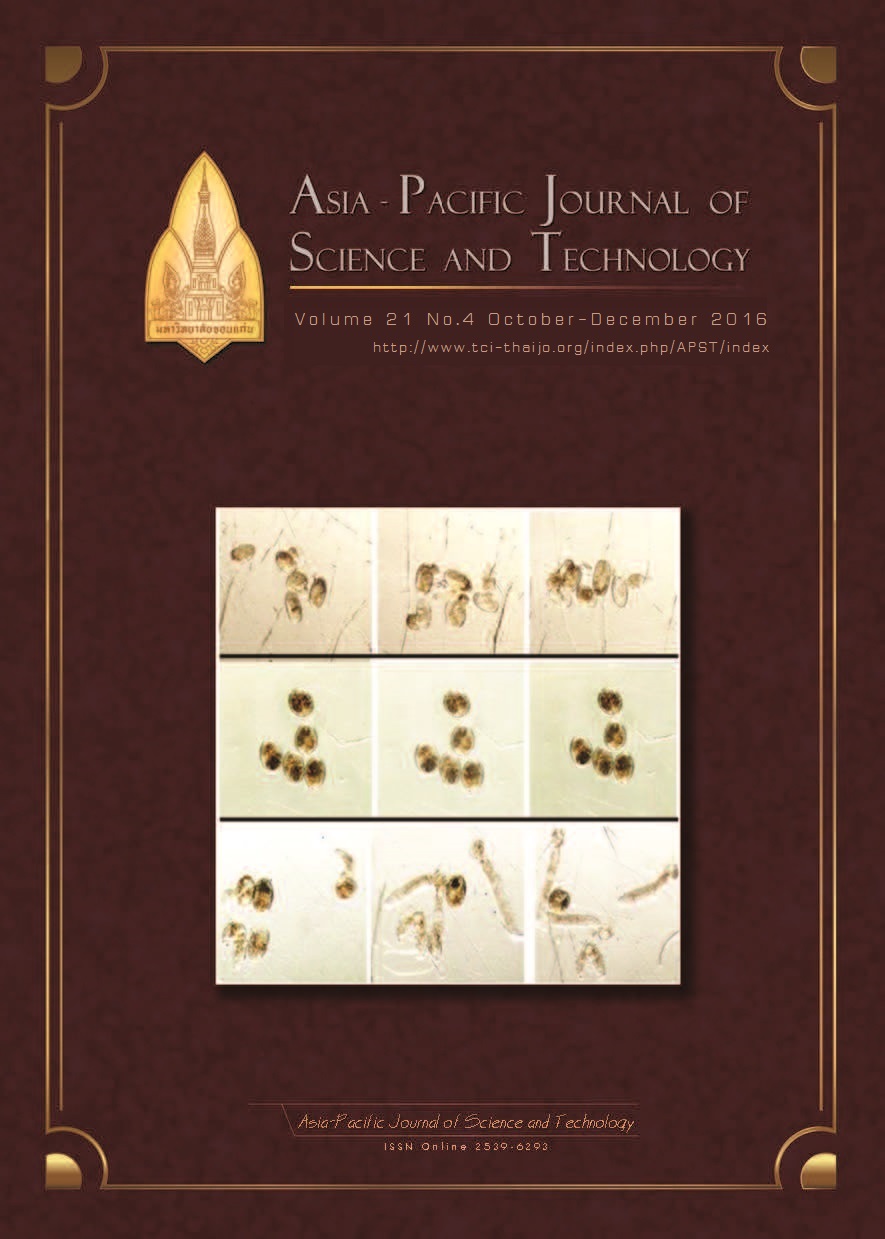Description of an agroforestry system
Main Article Content
Abstract
This study aimed to determine the definition of agroforestry and the functions of agroforestry system that could be modified to strengthen agrarian communities. The methodology of this study consisted of literature review and data analysis by content analysis technique. The results indicated that the definition of agroforestry could be shown in easy formula: Agriculture + Forestry = Agroforestry or building forests through agriculture. By cultivating crops in a condition similar to nature, it is possible to bring diversity back to fields and achieve sustainable production of crops that were previously mono-cultural. This study found three functions of Agroforestry System: 1) economic functions, composed of the four sub-functions of various, even and resilient incomes, production efficiency, expenditure reduction and economic immunity; 2) environmental functions, composed of the seven sub-functions of land conservation, sedimentary reduction, flood and droughty relief, storm resistant, micro-climate amelioration, carbon sequestration and biodiversity; 3) social security functions, composed of the five sub-functions of product charity, good health, knowledge sources, traditional descent, and social grouping and networking. The functions of agroforestry system might help strengthen the agrarian communities in many aspects of sufficient economy, capacity building, self-esteem, quality of life, social harmony, and ecological improvement. However, levels of the strength of the communities depended on some accelerators. In the future, agroforestry system extension can be one of the measures to support or be integrated into the routine socio-economic and environmental programs and projects of central and local governments in all types of agrarian communities.
Article Details
References
[2] Jongrungrot, V., Thungwa, S., 2014. Resilience of rubber-based intercropping system in Southern Thailand. International Journal of Advanced Materials Research 844, 24-29.
[3] Nair, P.K.R., 1993. An introduction to agriculture. Dordrecht: Kluwer Academic Publishers.
[4] Lundgren, B.O., Raintree, J.B., 1982. Sustained agroforestry. In: Nestel B, (Ed.) Agricultural Research for Development: Potentials and Challenges in Asia. The Hague: ISNAR, 37-49.
[5] Bumrungsri, S., Sawarngchot, P., Tepdontee, J., Nuttarom, N., Bualoy, K., Kemtong, P., Charychart, N., Billasoy, S., 2012. Leaves shed and decomposed rate, earthworms density, capacity of carbon dioxide fixation and diversity of birds and bats in rubber agroforestry and mono rubber plantation in Songkhla and Phatthalung. Prince of Songkla University: Songkhla.
[6] Jongrungrot, V., Thungwa, S., Snoeck, D., 2014. Tree-crop diversification in rubber plantations to diversify sources of income for small-scale rubber farmers in Southern Thailand. Bois Et Forets Des Tropiques 321, 21-32.
[7] Jongrungrot, V., 2014. The Economic Efficiency and Social Security of Smallholder Farming System which Practices Associate Crops in Rubber Plots in Southern Thailand [PhD Thesis]. Songkhla: Price of Songkla University. (Thai).
[8] Jongrungrot, V., Thungwa, S., 2013. The functional structures of a rubber-based agroforestry system. Thai Journal of Forestry 32, 123-133. (Thai).
[9] Young, A., 1989. Agroforestry for Soil Conservation. Wallingford: CAB International.
[10] Basu, S., Ewert, D., Maingot, R., Wang, J. Deforestation effects on sedimentation of watersheds and marine environments in MaMa Bay, Madagascar. Poster: Clark University.
[11] Kheowvongsri, P., 2008. Principle of agroforestry. Prince of Songkla University: Songkhla.
[12] Pierret, A., de Rouw, A., Chaplot, V., Valentin, C., Noble, A., Suhardiman, D., Drechsel, P., 2011. Reshaping upland farming policies to support nature and livelihoods: Lessons from soil erosion in Southeast Asia with emphasis on Lao PDR. Marseille: IRD and Colombo: IWMI.
[13] Jongrungrot, V., 2015. Social security of rubber-based agroforestry system towards strengthening rural communities in Southern Thailand. J Community Development Research (Humanities and Social Sciences). 8, 8-15. (Thai).
[14] De Leeuw, J., Njenga, M., Wagner, B., Iiyama, M., (eds.), 2014. Treesilience: An assessment of the resilience provided by trees in the drylands of Eastern Africa. Nairobi, Kenya: World Agroforestry Center (ICRAF)
[15] Wibawa, G., Joshi, L., Noordwijk, M., Penot, E., 2006. Rubber based Agroforestry System (RAS) as alternatives for rubber monoculture system. Kuala Lumpur: IRRDB.


